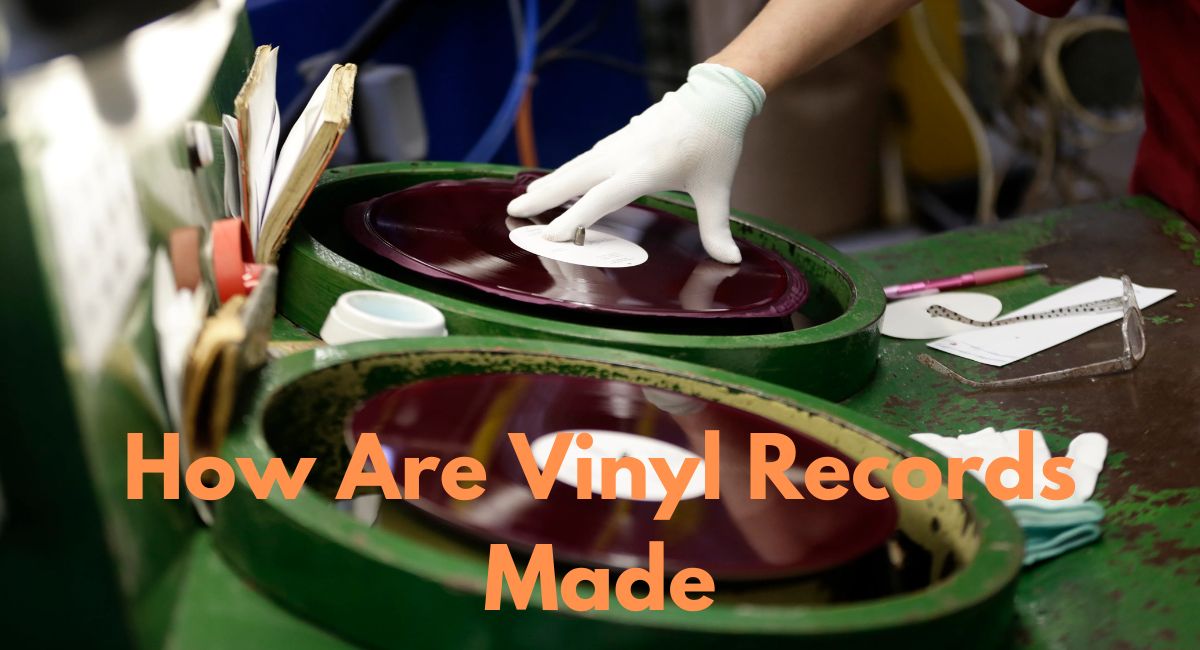Let me tell you something wild – did you know that a single vinyl record goes through more steps to come to life than most people go through to graduate college? Seriously! When I first discovered the mind-blowing process of how music gets transformed into those beautiful circular discs of analog magic, I was completely stunned. The journey from sound waves to a physical record is nothing short of an industrial art form. Every time I drop the needle on a record, I’m not just playing music – I’m experiencing a technical masterpiece that’s survived decades of digital challenges!
Contents
The Origins of Vinyl Record Production
Man, vinyl has been through quite the journey. Back in the day, music wasn’t something you could just stream or download – it was a physical experience. My grandfather used to tell stories about listening to early phonographs, where sound was literally carved into wax cylinders. Can you imagine? Those clunky machines were the grandparents of our modern vinyl records.
The evolution is crazy fascinating. We went from those fragile wax cylinders to shellac records, and then finally to the polyvinyl chloride (PVC) records we know and love today. Each technological leap was about capturing sound more accurately, preserving musical moments like precious memories. Early sound engineers were basically musical archaeologists, figuring out how to trap vibrations in physical media.
I remember finding my first vintage record player at a garage sale. It was beat up, missing knobs, but man – when I got that thing working, it was like discovering a time machine. The warm, slightly imperfect sound told stories beyond just the music. Each pop and crackle was a whisper from another era, a testament to analog sound’s incredible resilience.
The Recording Process – Where It All Begins
Recording music isn’t just about hitting “record” anymore. It’s an intricate dance of technology, creativity, and pure sonic alchemy. Professional studios are like scientific laboratories for sound, where every decibel is carefully crafted and considered.
Digital recording is precise, but analog? Analog is alive. When musicians record directly to tape or with techniques designed for vinyl, something magical happens. The sound becomes three-dimensional, breathing with subtle nuances that digital can’t capture. It’s like the difference between a photograph and a living, breathing person.
I once watched a documentary about classic recording techniques, and let me tell you – those sound engineers are basically musical surgeons. They’re not just capturing sound; they’re sculpting it. Every microphone placement, every EQ adjustment is like a brushstroke on an audio canvas.
Creating the Master Cut – The Lacquer Disc
Here’s where things get seriously cool. The master cut is basically the DNA of every vinyl record. A specialized lathe literally carves the audio waveforms into a lacquer disc with microscopic precision. We’re talking about cutting grooves that are thinner than a human hair!
The mastering engineer is part scientist, part artist. They’re responsible for ensuring that the music translates perfectly from studio recording to physical record. One wrong move, and the entire sonic experience can be compromised. It’s like being a translator for music, converting sound waves into physical geography.
I’ve seen these cutting lathes in action, and it’s mesmerizing. Imagine a diamond-tipped needle dancing across a disc, creating invisible mountains and valleys that will eventually reproduce sound. The precision is mind-blowing. These machines are like musical sculptors, transforming invisible sound waves into something you can literally touch and feel.
Electroplating – Transforming the Master
Electroplating sounds like something out of a sci-fi movie, but it’s a crucial step in vinyl record creation. That delicate lacquer disc gets transformed into a metal stamper through an electrifying process (pun totally intended).
The process involves creating negative and positive metal plates that will eventually press the actual vinyl records. It’s like creating a perfect sonic fingerprint that can be reproduced hundreds or even thousands of times. The precision required is mind-boggling – we’re talking about capturing sound waves with near-molecular accuracy.
Vinyl Compound Preparation
Not all vinyl is created equal. The compound used to create records is a carefully formulated mixture that can impact sound quality, durability, and even visual aesthetics. Some collectors go crazy for colored vinyl or special edition pressings.
Different music genres might even use slightly different vinyl compounds. A heavy metal record might require a more robust material compared to a delicate classical recording. It’s like each genre has its own sonic DNA, reflected right down to the material used to press the record.
The Pressing Process
Here’s where the magic really happens. A hydraulic press transforms that carefully prepared vinyl compound into an actual record. Imagine tons of pressure being applied to transform a small vinyl puck into a perfectly grooved musical disc. The stampers act like massive, precise cookie cutters, but instead of making cookies, they’re creating sound carriers.
Quality control is intense. Each record goes through multiple checks to ensure it meets exacting standards. A single imperfection can ruin the entire listening experience.
Finishing Touches – Packaging and Quality Control
The final steps are all about presentation and preservation. The record gets its beautiful jacket, labels are precisely applied, and final inspections ensure that what reaches the listener is nothing short of perfect.
Conclusion
From sound waves to physical records, this journey is a testament to human creativity and technological innovation. Each vinyl record is more than just a music storage device – it’s a piece of art, a technological marvel, and a connection to musical history.
Want to appreciate this incredible process even more? Next time you drop a needle on a record, take a moment to marvel at the incredible journey that brought that music to life. And hey – why not share your own vinyl experiences in the comments? I’d love to hear about your favorite records and the stories behind them!
This comprehensive guide has walked you through the incredible process of how vinyl records are made. Whether you’re a seasoned collector or just curious about music production, there’s always something new to learn about these magical musical discs.

I am Kenneth Haney, an unyielding audiophile and an ardent collector of vinyl records. My love affair with vinyl started at a young age of 15. As a teenager, I found myself enchanted by the distinct warmth and depth that vinyl brought to music. Unlike digital music, vinyl records carry a tangibility, a piece of history, an art that exists far beyond the confines of an MP3 file.
